How does flax grow and where is it used?
Flax is an annual plant of the Flax family that has been growing in our territory for thousands of years. But his homeland is India. It was there that linen fabric was first created. Now more than 200 species are known, in our region there are about 40. Flax is grown by large farms as a technical crop. The fabric from it remains popular to this day, it is grown in flower beds, and the seeds are used in medicine.
Content:
How flax grows
Sowing flax has several names: slate, fiber or cultivated. Flax stem is erect, thin, about 50 cm high, branched at the top. The leaves are narrow, lanceolate, about 5 cm long, arranged alternately. The stem and leaves are covered with a waxy coating. Flowers are small, 2-3 cm in diameter, gathered in umbrellas in inflorescences.
The color of the five petals is usually blue, but can be pink or white.
The petals are often smooth, there are corrugated ones. The flax flower is self-pollinated. After flowering, a box with 10 seeds is formed. It is round, slightly elongated at the top. Seeds are flat, round, shiny, yellow, brown or brown.
All flax varieties can be divided according to the growing season into early with a growing season of up to 80 days and late, up to 110 days. The early ones are grown in the northern flax-growing zone, the late ones - in the central and western ones.
Growing and harvesting
Flax grows best on moist, loamy soils of medium density. They should be loose and water permeable. It grows worse on sandy soils. Heavy clay and acidic soils are not suitable for growing flax. The site must be protected from strong winds.
Features of growing a plant:
- Flax is quite unpretentious, needs dry and warm weather during the period of seed ripening. But for the friendly emergence of seedlings, he needs a sufficient amount of moisture.
- Sow it in April. The soil temperature at a depth of 10 cm should rise to 7 ° C. Early sowing is preferable. In this case, the seeds manage to use the maximum amount of moisture in the soil. Plants are less affected by diseases. Sowing depth is up to 3 cm. Seeds are not afraid of a drop in temperature. They can also germinate at 2 ° C.
- The plot is prepared in advance, brought in organic (humus). Can be used in the process of growing EM-preparations. They improve the structure of the soil.
- For growth and active budding, a temperature of no higher than 17 ° C is required. Flax blooms in June and July. Seed ripening takes place for the next two months.
- Flax is fed with nitrogen, phosphorus and potash fertilizers.
When the seeds are close to readiness, the plants are watered with EM preparations. Cut the stems of the plants with a Fokin flat cutter after half or two-thirds of the bolls have turned brown. Lay to dry.
After a week, when the capsules rustle with seeds when shaken, they can be threshed.
A small amount of raw material can be processed by hand by kneading the pods over a wide bowl. If there is a lot of it, they wrap it up in a tarp and thresh it by tapping with a stick. Then the seeds are collected, blown in the wind.
After threshing, the seeds are still quite moist. They need to be dried in places where direct sunlight does not fall on them, and the air does not stagnate. This can be a shed or an attic with open windows.
Plant use
Flax has many beneficial properties. Valuable linen fabric is still made from its fibers, which is used for sewing summer clothes. Flax is a good precursor for many crops. Growing this plant improves the structure of the soil. The roots and stems contain a large amount of useful trace elements that pass into the soil. Therefore, flax partially fulfills the function of green manure.
As an ornamental plant, flax is planted in rock gardens, in flower beds, in separate groups.
Flax seeds are used in the baking industry. They are sprinkled on buns, added to some types of bread, chopped. Drying oil, paints and varnishes, oilcloth are prepared from flax seeds. From them you can get oil, which is used for the preparation of cosmetic creams. It smoothes out wrinkles on the face. Linseed oil is obtained by cold pressing. The cake left over from seed processing is used for livestock feed.
After the oil is squeezed out, cake and meal remain, which are used for livestock feed. They are considered one of the best feeding preparations. Previously, the cake is poured with warm water and wait until mucus with pectins forms there. There is information that the Colorado potato beetle does not like the smell of tannin in the leaves of flax and linseed oil, which is in the seeds. Therefore, it is advised to plant it near the crops that are most damaged by this pest. He also drives away the carrot fly.
Flax in medicine
The healing properties of flax were noticed long ago, back in Ancient Greece. With the help of its seeds, the body was healed. Flax seeds cleanse the body, they are used as emollients and dissolvers.
Flax seeds contain many useful substances:
- Proteins and carbohydrates.
- Calcium, Magnesium, Manganese, Iron, Zinc.
- Slime.
- Organic acids, including linolenic.
- Trace elements.
Features of use:
- Flax seed preparations are used by women suffering from hormonal disorders.
- The seed oil is used to prevent coronary heart disease. It is used to treat vascular diseases such as thrombosis and impaired blood flow. It helps to normalize blood pressure. Flax oil is used together with other drugs in the treatment of cancer, after chemotherapy. It removes radionuclides. Flax oil preparations reduce the risk of malignant tumors. Helps to reduce allergic reactions.
- Decoctions of seeds help to get rid of cough, bronchitis, are involved in the treatment of cystitis, nephritis and gynecological diseases. They relieve pain, help restore the body after food poisoning. They have an anthelmintic effect. Used for enemas.
- Homeopathic remedies have been created based on flax seeds, which have anti-inflammatory, expectorant, laxative and analgesic effects.
- An emulsion is prepared from linseed oil for the treatment of dermatitis and boils.
- Flaxseed slime is used, which is prepared by pouring half a teaspoon of seeds with 100 g of boiling water. Then the dishes are shaken for 15 minutes. Strain through a cotton cloth. Mucus is used as an enveloping agent for food poisoning and diarrhea of various origins.
- Flax seed tinctures are prepared by pouring boiling water over the seeds. Insist for 10 minutes. It is taken orally after straining. Also used to treat burns. A new tincture is prepared every day, on the second day it loses its properties.
- You can get rid of pain by applying a compress with flax seeds to the sore spot. They are dipped in a gauze bag in boiling water, then applied hot. Hot compresses should not be applied to areas where pus can collect or to tumors.
Not everyone can use flax seeds and preparations from them. In no case should they be used by people suffering from hepatitis, cholecystitis. Do not use for acute bowel disease and a tendency to diarrhea.Long-term use of preparations made from flax seeds may not be beneficial, but harm. General intoxication of the body sets in.
Flax seeds intended for use in medicine are stored in packs for three years. It is impossible to consume flax grass inside, because it is poisonous.
More information can be found in the video:



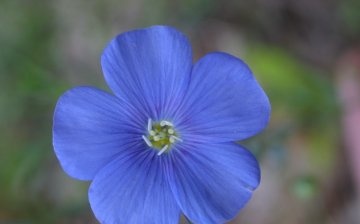
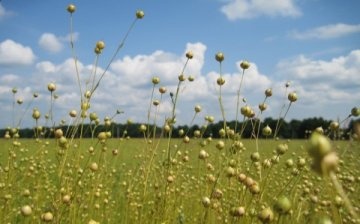
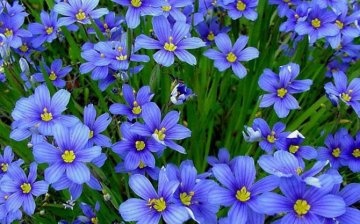
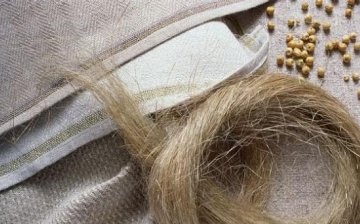
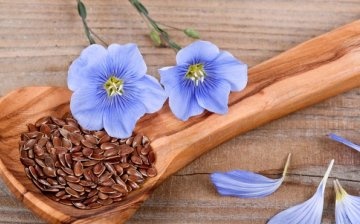





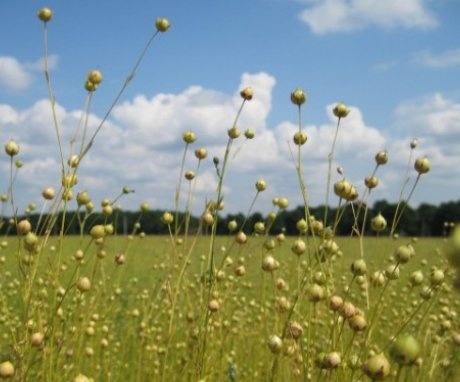

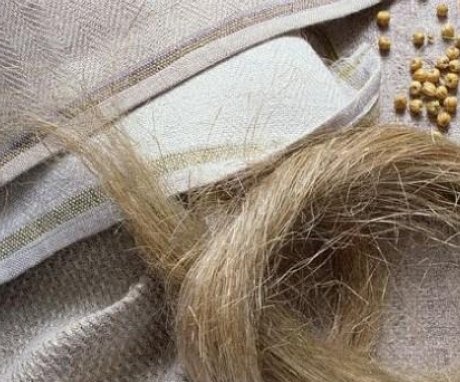
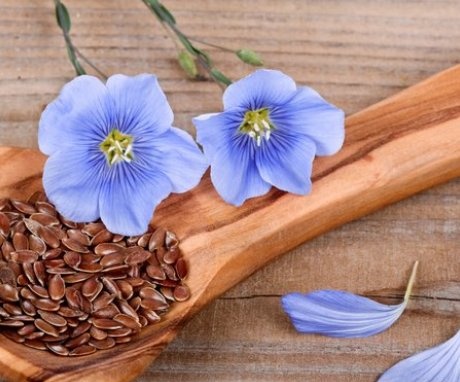
Flax grows in our country house, He is really unpretentious in care, and looks beautiful in the flowerbed. But, I remember the times from my childhood when flax was sown for industrial purposes. They were huge fields, blooming in blue. I wonder if it is grown somewhere else on a large scale, or just as an ornamental plant?
If the grass is poisonous, why do flax seeds have such a huge healing effect in various diseases. In addition, flax seeds can still be used for weight loss.
It is a pity that now they have stopped growing flax in order to create fabrics from it. After all, linen clothes are very useful for health, and even in the hottest summer you don't bathe in them. And on the flower beds, blue flax flowers look quite beautiful and unusual. I think it's time to start farming flax on an industrial scale.
Recently, they often began to talk about the health benefits of this plant, even athletes are advised to include its seeds in their diet. Probably, I'll try to plant him in the country.